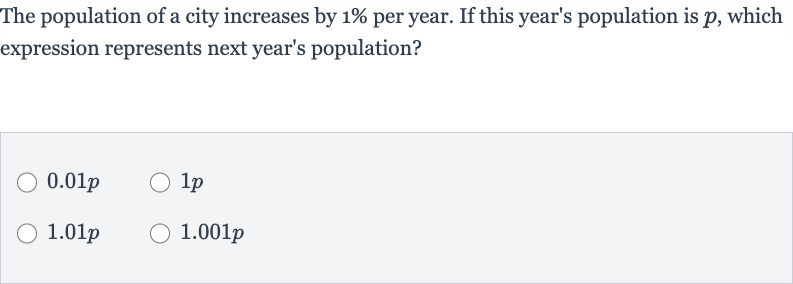Full solution
Q. The population of a city increases by per year. If this year's population is , which expression represents next year's population?
- Understand Population Increase: Understand the percentage increase in population. The population increases by per year. To find the population for the next year, we need to add this increase to the current population.
- Convert to Decimal: Convert the percentage increase to a decimal. as a decimal is . This means that the increase in population is times the current population .
- Calculate Next Year's Population: Calculate the population for the next year.To find the next year's population, we add the increase to the current population. This is equivalent to multiplying the current population by (which represents of the current population) plus the decimal equivalent of the increase (which is ).Next year's population =
- Identify Correct Expression: Identify the correct expression.The correct expression that represents next year's population is .

